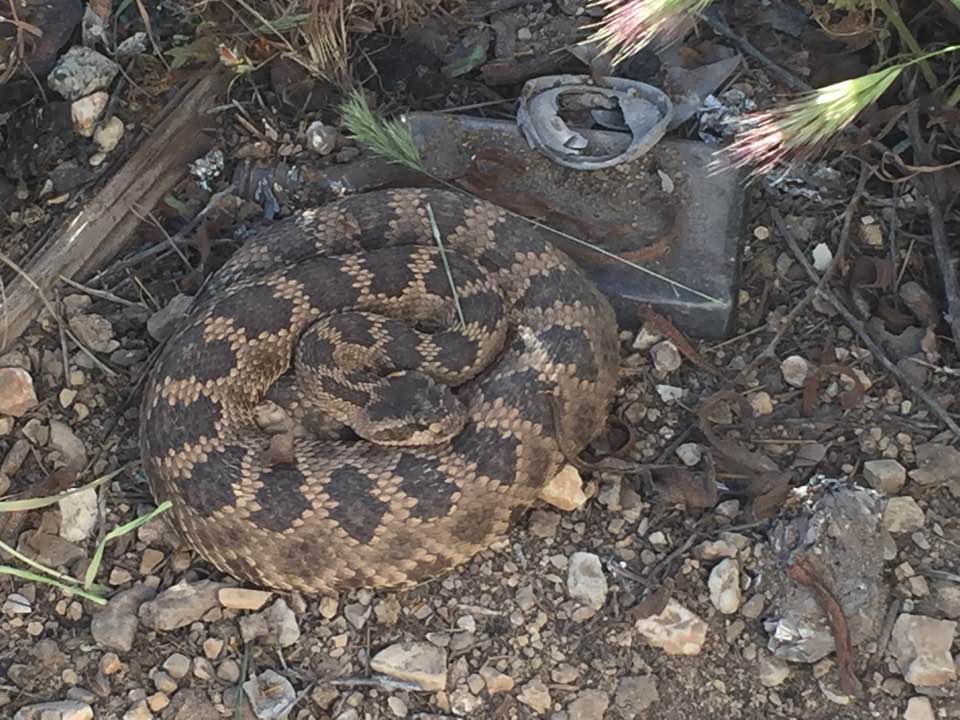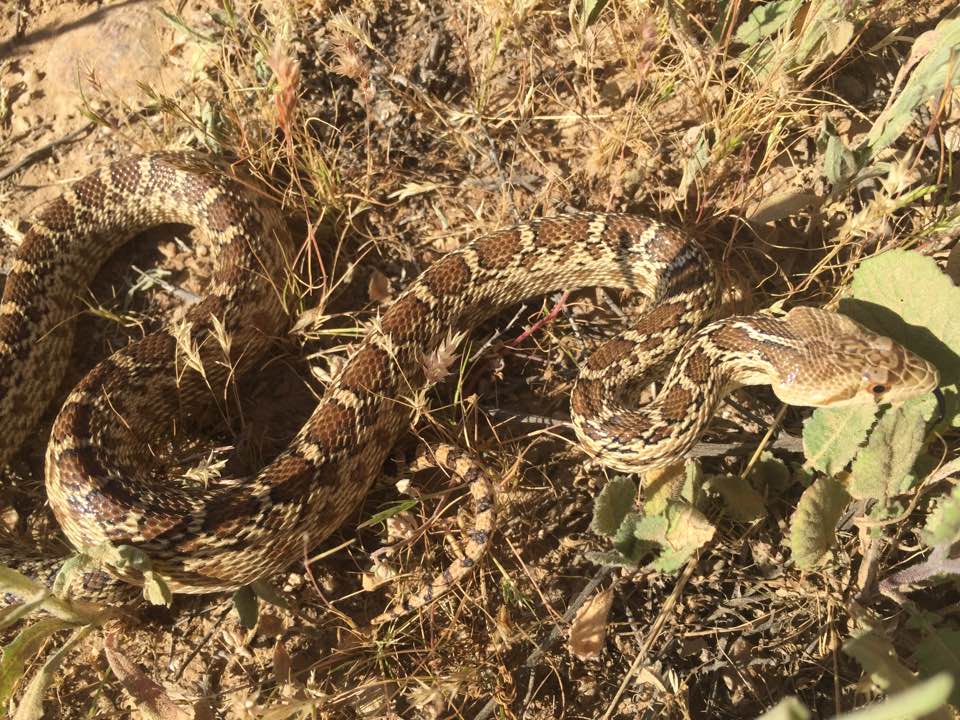What to do if it Rattles: Snake Safety on the Yuba
It’s starting to warm up outside, and us humans aren’t the only ones that enjoy the sunshine. That’s right, it’s snake season! While some people may fear them, these animals are a vital part of our ecosystem. Here’s how you can safely navigate a snake encounter and appreciate their beauty.
There is only one venomous snake that calls the Yuba River Watershed home: the Northern Pacific Rattlesnake. The Northern Pacific Rattlesnake is fairly common in the watershed and can typically be found among the rockier areas of grasslands, sagebrush, and mixed woodlands. While these snakes are venomous, they are fairly shy and prefer to stay away from people. When threatened, rattlesnakes will likely rattle the buttons on their tail to let you know they are there and then try to escape.
The Northern Pacific Rattlesnake is fairly easy to identify. Adults are around 3 feet in length and have multiple buttons on the end of their tail that compromises their rattle. Their bodies vary from olive-green to brown in color, with dark brown blotches along the back and sides. The most distinctive feature is the triangular shaped head.


Many other snakes call the Yuba home, but some make convincing lookalikes for rattlesnakes. One snake many people get confused with rattlesnakes is the gopher snake. Gopher snakes have similar patterning, but can be easily distinguished by their much smaller heads, slender bodies, round pupils, and lack of a rattle. However, when threatened gopher snakes will flatten their head and shake their tail rapidly, in order to mimic a rattlesnake. Don’t be fooled by this display though, as these snakes are harmless.
How to deter snakes from your home
The best way to keep snakes away from your property is to keep the property tidy. Snakes are fairly secretive and don’t like to travel out in the open, so cutting tall grass will help mitigate this. Keeping grass cut low will also deter prey items such as rodents that often attract snakes to the area.
Removing excess outdoor materials will also deter snakes. Snakes need shady spots in the summer to cool down. Removing excess items that create tight spaces, especially against your house, will eliminate those shady spots that snakes need. This includes old building materials such as stacks of bricks or plywood, as well as things like wood piles.
What to do if you encounter a snake
If you see a rattlesnake on the trail, remain calm. Slowly walk around it, giving it a wide berth, without making any sudden, threatening movements. If passage is not possible, back away and give the snake time to escape. Do not block any escape routes, and do not try to move the snake yourself. The California Department of Fish and Wildlife has outlined some good guidelines for staying safe around rattlesnakes as well.

If you are bitten by a rattlesnake, call 911 and go to the nearest medical facility that offers antivenin treatment. Do not apply a tourniquet or try to suck out the venom. Most rattlesnake bites are not deadly but they do require fast treatment to minimize tissue damage.
For more information about rattlesnakes or other reptiles and amphibians, check out CalHerps.
Did you enjoy this post?
Get new SYRCL articles delivered to your inbox by subscribing to our ENews.


